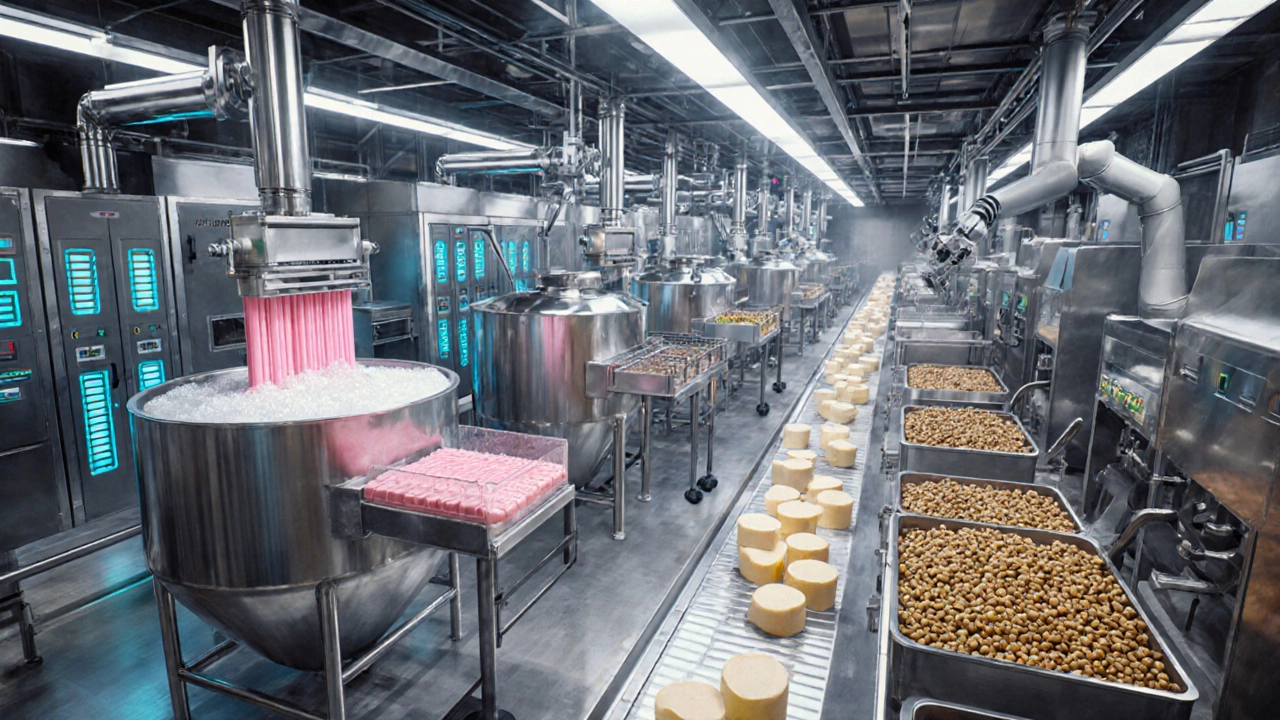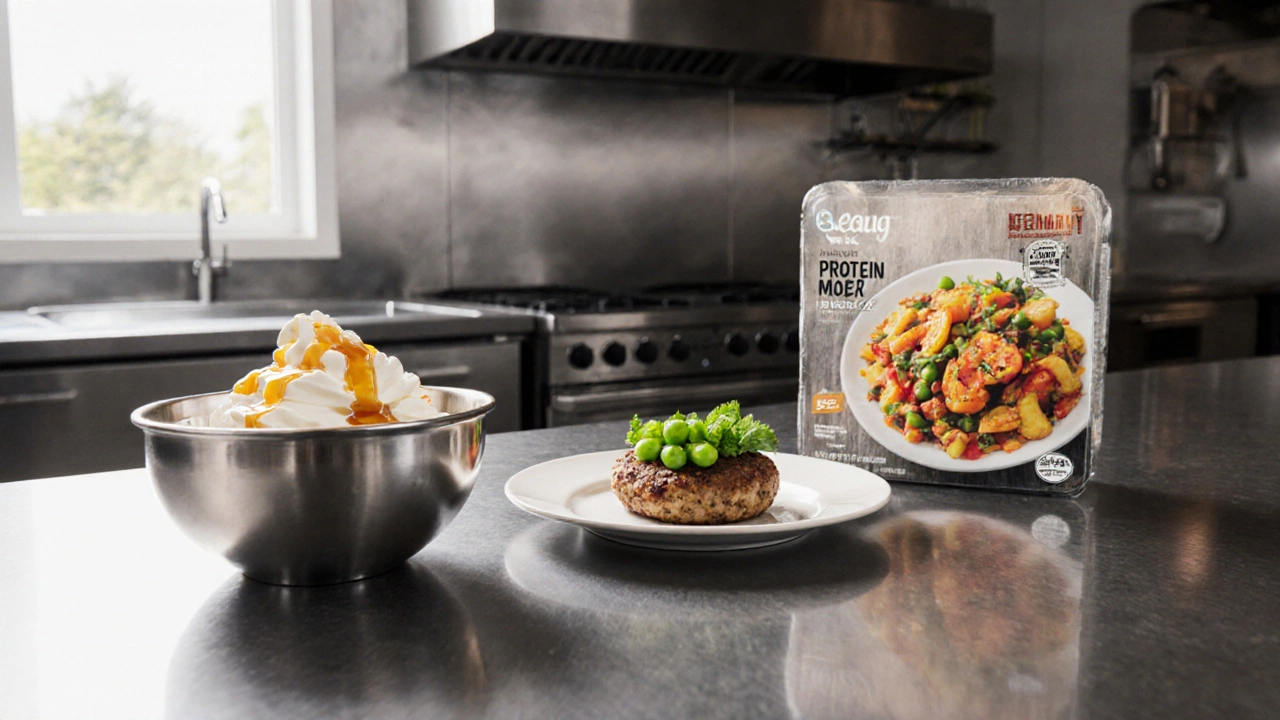Food Business Selection Tool
Answer 5 questions to identify the food business type that best matches your situation and goals.
Quick Takeaways
- The highest‑margin food businesses in 2025 are dairy processing, plant‑based protein, and ready‑to‑eat meals.
- Average profit margins range from 12% for fruit juice to over 25% for specialty dairy.
- Initial capital can vary widely - from £150,000 for a small snack line to £3million for a meat‑packing plant.
- Regulatory compliance, supply‑chain reliability, and consumer trends are the three biggest profit drivers.
- Use the decision checklist near the end to match a business model to your budget, skills, and market.
What Makes a Food Business Profitable?
Profitability in the food sector boils down to three numbers: revenue, variable cost, and fixed cost. The most profitable food business is the one that can keep the variable cost (ingredients, packaging, labor) low while scaling revenue quickly. In 2025 the UK food market is worth about £115billion, and niche‑high‑margin categories are pulling in double‑digit growth rates thanks to health trends, convenience demand, and premium pricing.
To keep it simple, think of profit margin as the slice of every pound that stays in your pocket after subtracting the cost of goods sold (COGS). A 20% margin means you keep £0.20 for every £1 of sales. That slice can be widened by:
- Automation that lowers labor.
- Vertical integration - owning your own farms or processing lines.
- Premium branding that lets you charge more.
Top Food Business Types with the Best Returns
Below are the six food business models that consistently post the highest margins in the UK and EU. Each entry includes the profit margin range, typical start‑up capital, and a quick note on why it’s hot right now.
Dairy Processing is a specialized segment that turns raw milk into cheese, yogurt, ghee, and high‑protein drinks. Because dairy products have a long shelf life and can be sold at premium prices, profit margins often sit between 18% and 28%.
- Initial CapEx: £500k-£2m (depending on scale and automation).
- Key Trend: Plant‑based dairy blends and clean‑label yogurts are driving demand.
Snack Manufacturing covers everything from potato chips to roasted legumes. Snacks are a $120billion global market, and UK consumers are buying more ‘better‑for‑you’ alternatives, pushing margins to 15%‑22%.
- Initial CapEx: £150k-£800k (equipment for frying, seasoning, and packaging).
- Key Trend: High‑protein, low‑sugar, and up‑cycled ingredient snacks.
Fruit Juice Production transforms fresh fruit into bottled or canned juice. While the juice market is crowded, niche cold‑pressed and functional juices (added vitamins, adaptogens) can hit 12%‑18% margins.
- Initial CapEx: £200k-£1m (cold‑press machines, pasteurisation, bottling line).
- Key Trend: ‘Clean‑label’ and sugar‑reduced blends.
Ready‑to‑Eat (RTE) Meals are pre‑cooked meals sold in the freezer or refrigerated aisle. Convenience is king, and premium RTE meals (diet‑specific, organic) enjoy 20%‑30% margins.
- Initial CapEx: £800k-£3m (cook‑and‑freeze line, quality control labs).
- Key Trend: High‑protein, keto‑friendly, and plant‑based meals.
Plant‑Based Protein Manufacturing creates meat‑alternatives from peas, soy, or fungi. Margins are soaring at 22%‑35% as retailers stock more plant‑based options.
- Initial CapEx: £1m-£5m (extrusion, texturising, flavor‑development labs).
- Key Trend: Clean‑label, allergen‑free, and high‑fiber formulations.
Meat Processing includes slaughter, butchery, and packaging of beef, pork, or poultry. Although capital‑heavy, premium cuts and ready‑to‑cook kits can push margins to 15%‑22%.
- Initial CapEx: £2m-£10m (hygiene zones, chilling, automated cutting).
- Key Trend: Traceability, sustainability certifications.

Side‑by‑Side Comparison
| Business Type | Avg. Profit Margin | Typical Start‑up CapEx | ROI Period | Key Market Trend |
|---|---|---|---|---|
| Dairy Processing | 18%‑28% | £0.5m-£2m | 2‑4years | Clean‑label yogurts & protein drinks |
| Plant‑Based Protein | 22%‑35% | £1m-£5m | 2‑3years | Allergen‑free, high‑protein |
| Ready‑to‑Eat Meals | 20%‑30% | £0.8m-£3m | 2‑4years | Keto & vegan convenience |
| Snack Manufacturing | 15%‑22% | £0.15m-£0.8m | 1‑3years | High‑protein, up‑cycled snacks |
| Fruit Juice Production | 12%‑18% | £0.2m-£1m | 2‑5years | Cold‑pressed, functional blends |
| Meat Processing | 15%‑22% | £2m-£10m | 3‑6years | Traceability & sustainability |
Key Factors That Drive Profit Margins
Even the best‑performing business can slip if you overlook these levers.
- Supply‑chain reliability: Locked‑in contracts for raw materials protect you from price spikes.
- Regulatory compliance: The UK Food Standards Agency requires HACCP plans, labeling, and allergen controls. Non‑compliance can cost up to £100k in fines and product recalls.
- Automation level: A 30% labor reduction through robotic packaging can add 4%‑6% to your margin.
- Brand positioning: Premium branding justifies higher price points; a well‑crafted story around local sourcing can lift margins by 3%‑5%.
- Energy costs: Food processing is energy‑intensive. Investing in heat‑recovery systems can shave 2%‑4% off operating expenses.
How to Choose the Right Business for You
Run through this quick self‑diagnostic. Answer yes or no, then tally your score.
- Do you have **£1million‑plus** to invest? → Yes = Meat Processing or Plant‑Based Protein; No = Snacks or Juice.
- Is your background in **dairy, meat, or biotech**? → Align with your expertise to reduce learning curve.
- Do you want **fast‑track to market** (under 12 months)? → Snacks or Juice need fewer permits.
- Are you targeting **premium/health‑conscious** consumers? → Dairy, Plant‑Based Protein, or RTE Meals.
- Can you secure a **stable raw‑material supply** (milk farms, pea growers, etc.)? → Essential for Dairy, Plant‑Based Protein.
Score 4‑5=high‑capex, high‑margin path. Score 2‑3=mid‑range entry. Score 0‑1=low‑capex, niche snack or juice venture.
Step‑by‑Step Startup Checklist
- Validate demand - run a small‑scale pilot or use Google Trends for your product keyword.
- Write a HACCP plan - you’ll need it for the Food Standards Agency inspection.
- Secure financing - explore UK’s Innovate UK grants for food tech, plus bank loans.
- Find a location - industrial parks near Birmingham offer lower rates and good logistics.
- Choose equipment - compare manufacturers on energy consumption and service contracts.
- Hire key staff - a plant manager with food‑industry experience can cut setup time by 30%.
- Launch a brand - develop packaging that tells a story (local, sustainable, allergen‑free).
- Set up distribution - partner with local supermarkets, online grocery platforms, or food‑service distributors.
- Monitor KPI’s - track Gross Margin, OPEX %, and Order Fill Rate weekly.
Frequently Asked Questions
Which food business needs the least capital to start?
A small‑scale snack line (e.g., homemade protein bars or roasted nuts) can be launched for under £150k using a modest production line and a shared kitchen facility.
Are profit margins higher for premium or mass‑market foods?
Premium, health‑focused products usually command higher prices and better margins (20%‑35%) compared to volume‑driven mass‑market items, which often sit below 10% after discounting.
How long does it take to get a food‑safety licence in the UK?
Typically 6‑12weeks, assuming your HACCP plan is complete and the premises pass the initial inspection.
Is plant‑based protein really more profitable than dairy?
Both can be highly profitable, but plant‑based protein often enjoys higher margins (up to 35%) because raw material costs are lower and the market is still expanding, whereas dairy margins cap around 28% due to tighter commodity pricing.
What are the biggest risks for a new food processing venture?
Supply disruptions, regulatory breaches, under‑estimating working‑capital needs, and failing to differentiate in a crowded market are the top three risk factors.
